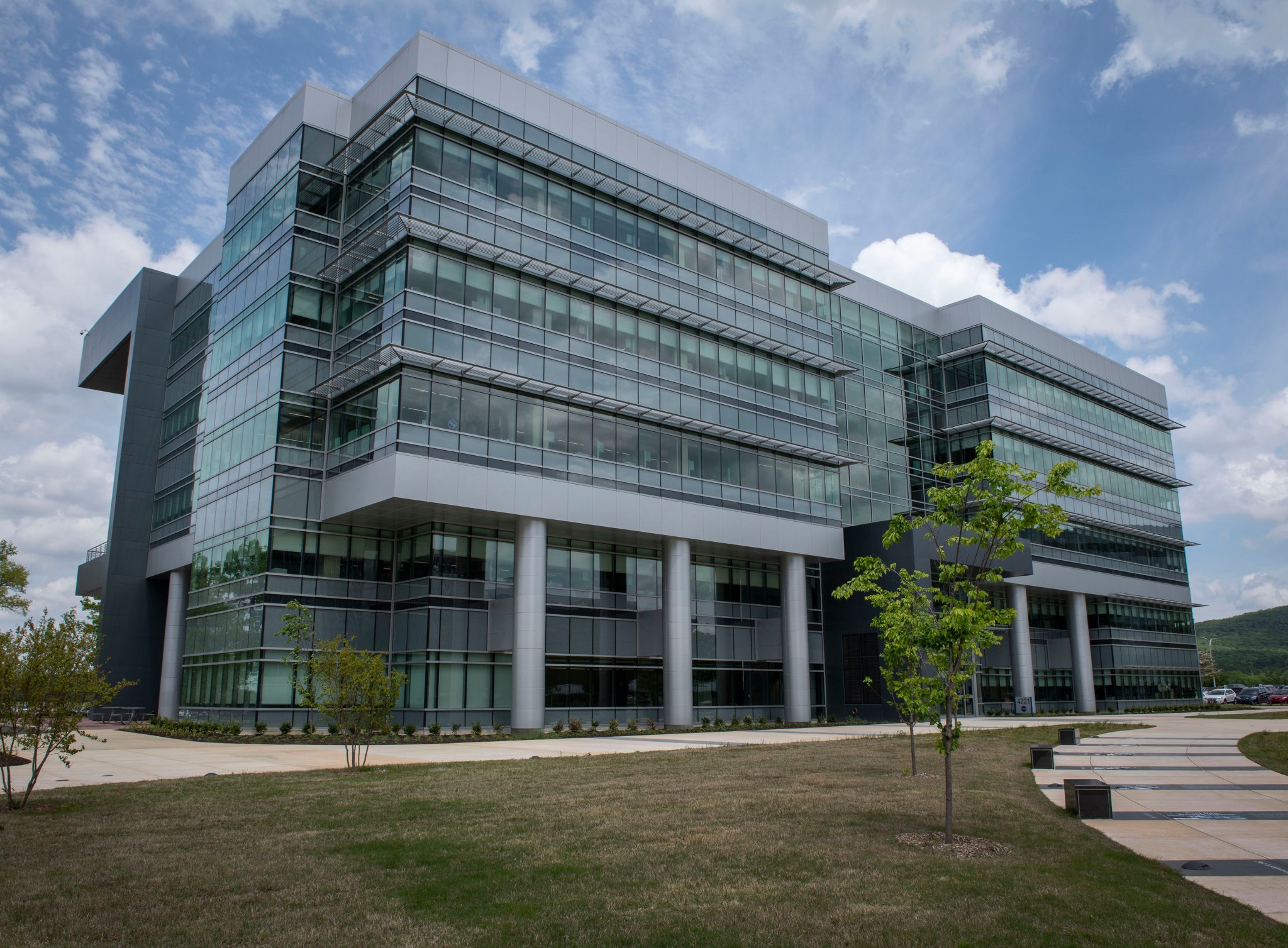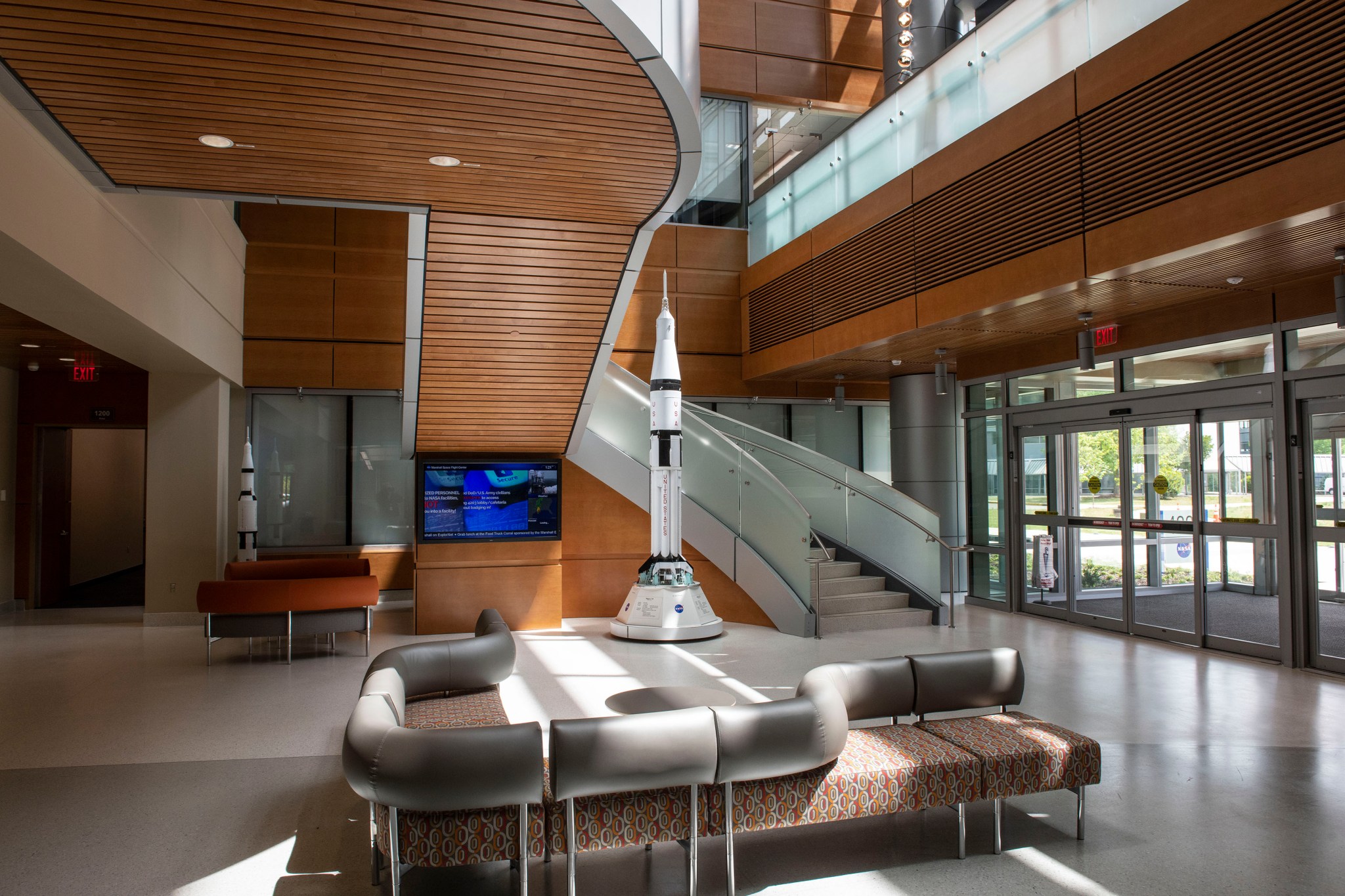NASA’s Marshall Space Flight Center in Huntsville, Alabama, officially opened the doors of its newest environmentally-friendly building on Earth Day, April 22, with a ribbon-cutting ceremony that included U.S. Senator Doug Jones of Alabama, representatives of NASA Headquarters in Washington and the U.S. Army Corps of Engineers.
Building 4221, situated on the north side of the 4200 Marshall office complex, is a five-story glass-and-steel structure designed to rigorous federal guidelines on energy and water efficiency. It provides offices and workspace for some 440 team members supporting Marshall’s Human Exploration Development & Operations Office, its Science & Technology Office and the NASA Engineering & Safety Center — all of them critically involved in the agency’s mission to once more put boots on the Moon and prepare for human exploration of Mars.
“The completion of Building 4221 marks a significant milestone,” Marshall Director Jody Singer told gathered workers and officials during the grand opening event. “We’re adding effective, environmentally-friendly and ‘pocketbook friendly’ infrastructure for the next two generations — and demonstrating NASA’s continuing commitment to good stewardship of taxpayer dollars.”
The official ribbon-cutting included event speakers Col. Sebastien Joly, commander of the U.S. Army Corps of Engineers’ Mobile District; Singer; Jones; and Roy Malone, director of Marshall’s Office of Center Operations.
The entire new structure is specially insulated, with much of the exterior covered in low-emissivity glass that deflects heat, reducing cooling costs. Rooftop solar-power units absorb energy to augment electrical power, and 99% of the building’s lighting features cost-efficient LEDs, or light-emitting diodes.
Building 4221 is undergoing certification by the U.S. Green Building Council for Leadership in Energy and Environmental Design, the national standard for development of high-performance, sustainable structures. The new structure will be the ninth LEED-certified facility at Marshall, which also is home to NASA’s first LEED-certified structure: Building 4600, the anchor of Marshall’s high-tech engineering complex, which opened in 2006.
Marshall’s refurbishment of the 4200 complex began with the opening of Building 4220 in 2014. Both 4220 and 4221 are part of NASA’s “repair-by-replacement” plan — tearing down costly, aging structures and replacing them with new facilities offering measurable health, safety and cost benefits. The end goal is to dramatically cut infrastructure operating costs and to reduce Marshall’s overall square footage on Redstone Arsenal, its home since July 1960, by more than 25%.
The new building is expected to slash utility costs by more than 32% over the “vintage” Building 4201, situated south of Building 4221 across the quad complex, and will save more than 16% of the total operational costs of its predecessor. Building 4201 is next up for demolition in Marshall’s Facilities Master Plan, which will connect its new facilities via an interconnected, campus-style “greenway” of walking paths.
Building 4221 was designed by the Nashville-based architectural firm of Thomas Miller & Partners. Yates Construction of Philadelphia, Mississippi, constructed the facility. The Army Corps of Engineers oversaw the contract process, and NASA provided construction management and inspection services.
For more information about Marshall, visit:




























